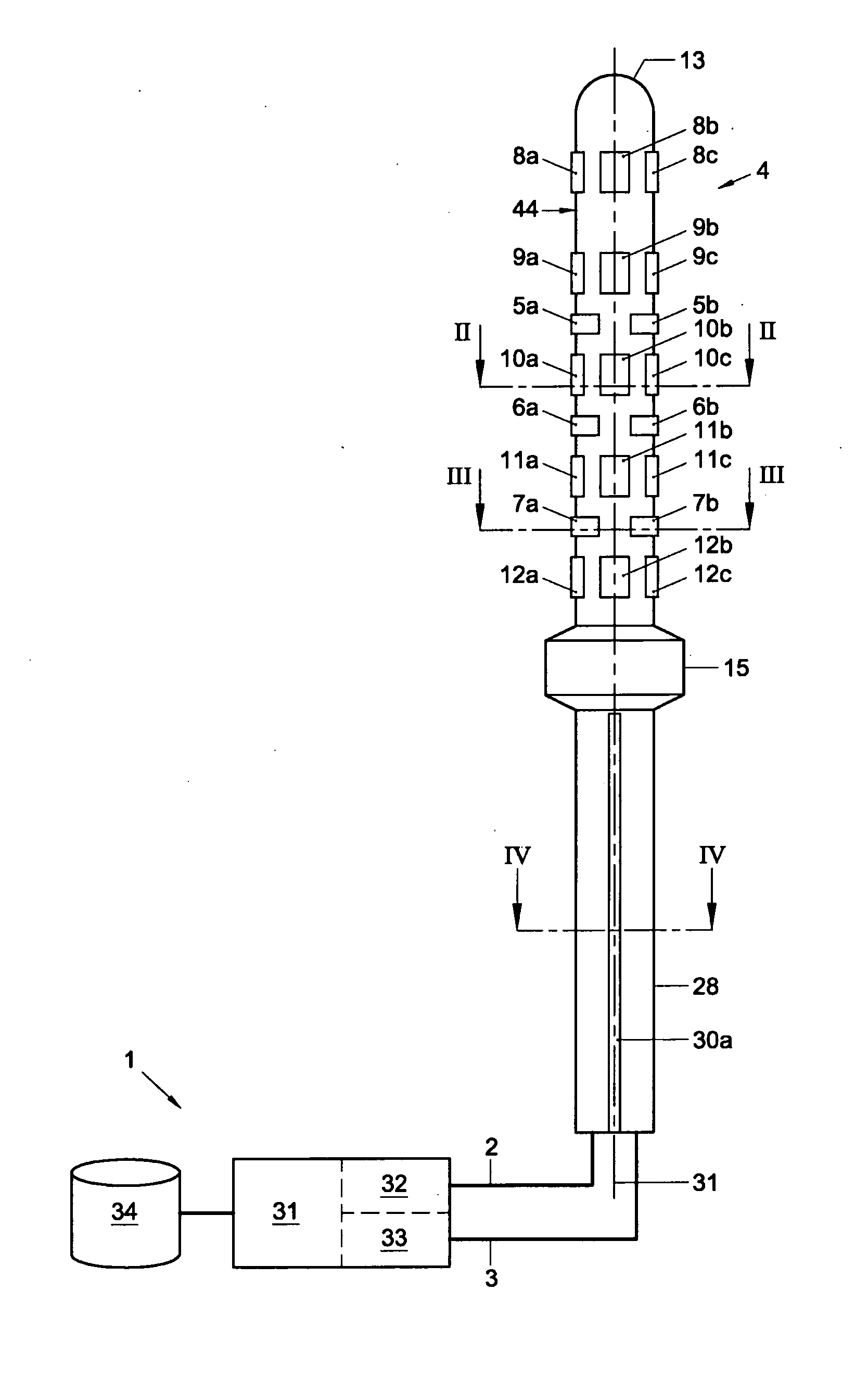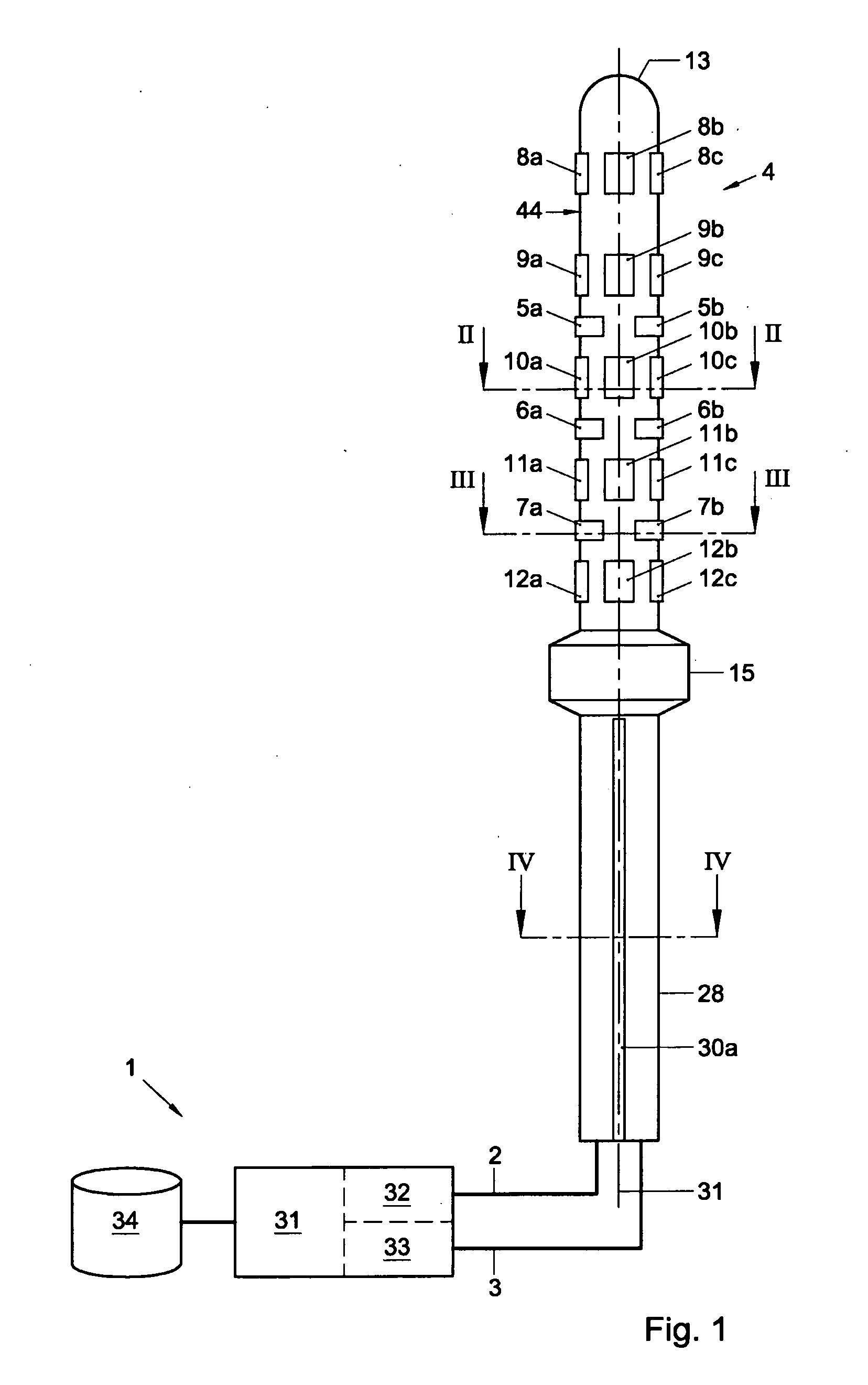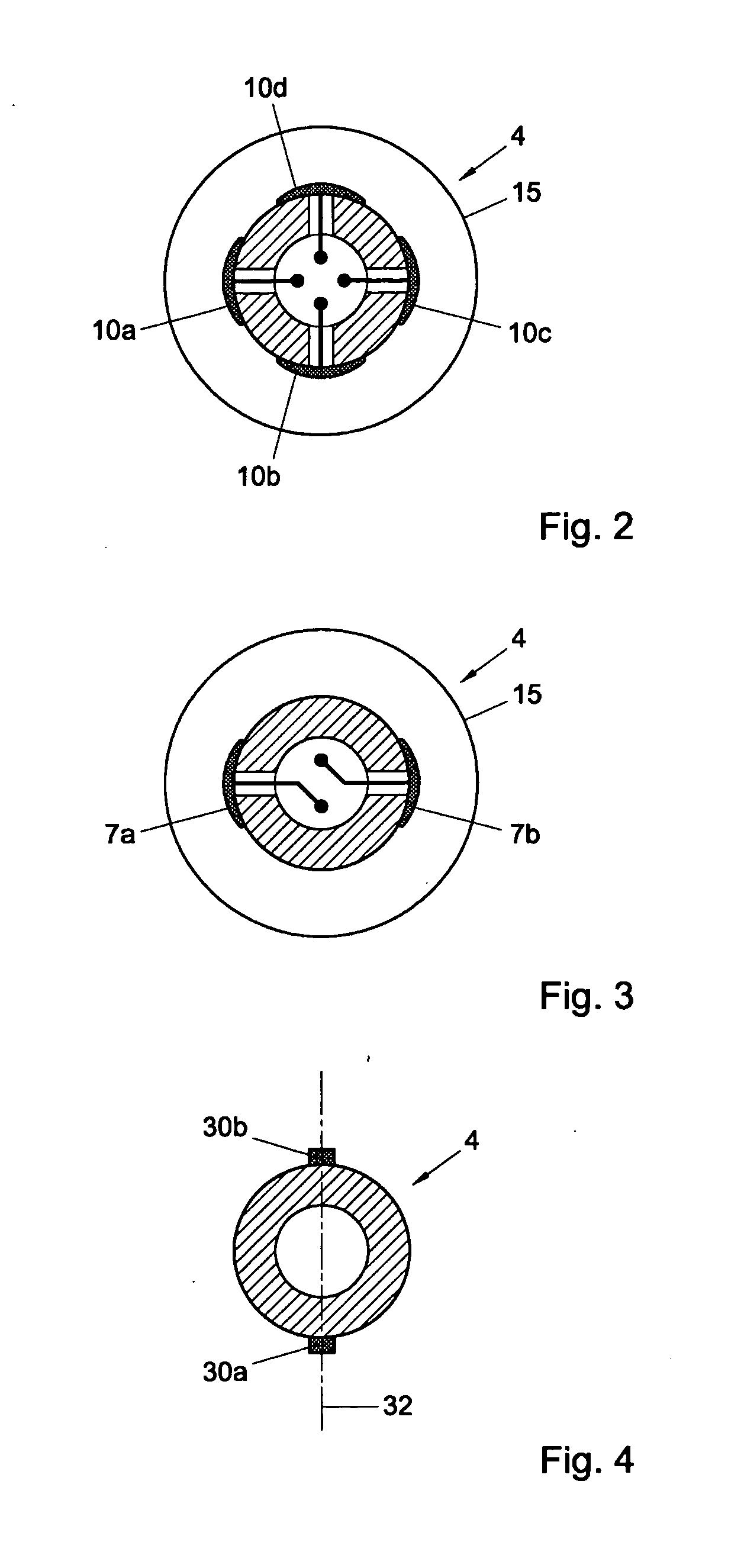Probe system and a probe for measuring functionality of an orifice in the human pelvic region
a technology for human pelvis and orifices, which is applied in the field of probe systems and probes for measuring the function of orifices in the human pelvis, can solve the problems of insufficient muscle strength or stamina, widespread problems involving substantial embarrassment, discomfort and distress, and the success rate of such treatments has been quite low
- Summary
- Abstract
- Description
- Claims
- Application Information
AI Technical Summary
Benefits of technology
Problems solved by technology
Method used
Image
Examples
Embodiment Construction
[0018]In FIGS. 1-4, an example of a probe system composed of a control system 1, signal transfer lines 2, 3 and a probe 4 is shown. The probe 4 according to the present example has a cylindrically shaped shank 44 with a diameter of 0.5 cm. Preferably, the diameter of the shank is between 0.25 and 2 cm. A stop 15 projects radially from the shank 44 at a distance of 5 cm from a distal end 13 of the probe 4 and constitutes an abutment for reliably maintaining the probe 4 inserted to a constant, maximum insertion depth. To ensure sufficient penetration depth for measuring in the relevant sections of the anal canal, the distance from the stop to the distal end of the probe is preferably at least 3.5 cm and more preferably at least 4 cm.
[0019]It is observed that, where the terms “proximal” and “distal” refer to the position of portions of the probe, the terms “distal” and “proximal” are used in relation to the probe. The end 13 intended to be leading during insertion and oriented away fro...
PUM
 Login to View More
Login to View More Abstract
Description
Claims
Application Information
 Login to View More
Login to View More - R&D
- Intellectual Property
- Life Sciences
- Materials
- Tech Scout
- Unparalleled Data Quality
- Higher Quality Content
- 60% Fewer Hallucinations
Browse by: Latest US Patents, China's latest patents, Technical Efficacy Thesaurus, Application Domain, Technology Topic, Popular Technical Reports.
© 2025 PatSnap. All rights reserved.Legal|Privacy policy|Modern Slavery Act Transparency Statement|Sitemap|About US| Contact US: help@patsnap.com



